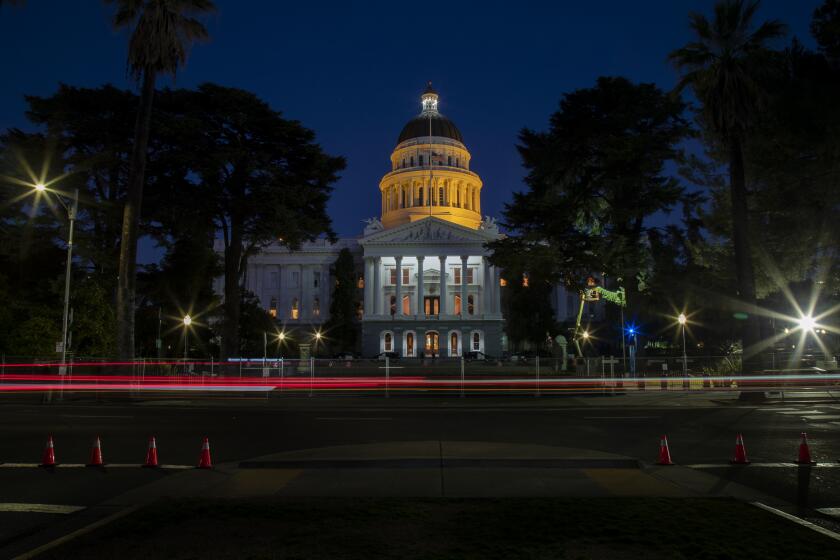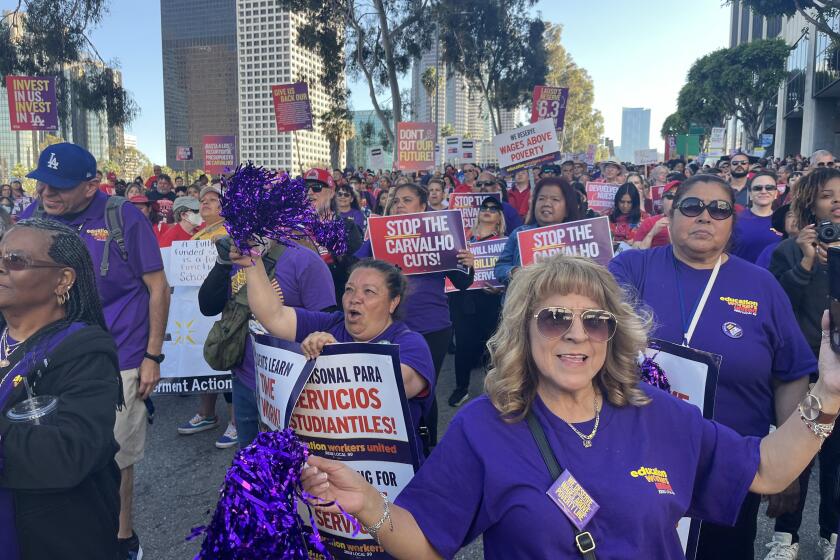‘This whole thing brought us together, and we’ve found out that separate dining sections work; they’re the wave of the future. . . .’
Hunched against the morning chill, the woman sat alone amid the empty tables on the outdoor patio at the Cafe Casino in Beverly Hills, a cup of coffee cradled comfortingly in one hand and a cigarette clutched defiantly in the other.
“How do I like the new smoking ordinance? Well, what do you think?” she asked, nodding toward the nonsmoking patrons basking in the warmth of the dining room inside. “I’m out here, and they’re in there.”
It was April 3, 1987--the date the Beverly Hills smoking ban went into effect--a day that would live in infamy, as far as some tobacco-puffing customers of the city’s 125 restaurants were concerned.
Under the landmark ordinance, Beverly Hills became only the second city in the nation--after Aspen, Colo.--to ban smoking in most of its restaurants and public places. Only bars, restaurants in hotels, private banquet rooms and open-air dining areas were exempt. Smokers who defied the law and prompted complaints from other patrons were subject to fines up to $500.
Sponsors said the idea behind the measure--adopted unanimously by the Beverly Hills City Council--was to give restaurant patrons a pristine atmosphere, free from the contaminants of tobacco smoke.
But what a lot of diners got instead was an atmosphere charged with conflict, as smokers and nonsmokers faced off in nasty little disputes over whose rights preempted whose.
Beverly Hills police wrote only one citation under the ordinance, which lasted less than four months in its original form. But restaurateurs said business dropped an estimated 30% as patrons looked elsewhere--often in nearby West Los Angeles--where smoking and nonsmoking diners were permited to coexist, albeit in segregated quarters.
Council Reconsiders
“One problem was that businessmen didn’t know whether their clients smoked or not, so they took them someplace else,” said Bob Spivak, president of the Beverly Hills Restaurant Assn.
The restaurant association charged that the ordinance was discriminatory and unconstitutional. The City Council agreed to reconsider the matter.
On July 21, 1987, the council amended the ordinance to allow smokers back indoors and required walls separating dinings areas for smokers and nonsmokers. Restaurants seating more than 50 would be required to install separate ventilation systems.
Last December, the council postponed the deadline for complying with the amended ordinance after restaurateurs said the new measure was too costly and would threaten the ambiance of their establishments.
In April, the council--with a newly elected majority--watered down the ordinance again, retaining the separate smoking and nonsmoking sections but dropping the requirement for separation walls and simplifying ventilation requirements. The restaurants’ new deadline for submitting plans for segregated dining areas is Dec. 15.
“That’s where it’s at right now,” Spivak said a few days ago. “And we’re happy with the way it’s going . . . .
“This whole thing brought us together, and we’ve found out that separate dining sections work; they’re the wave of the future. . . .
“We were afraid we’d lost customers we wouldn’t get back, and to a certain extent, that happened,” Spivak said. “But we’ve gotten new customers in their place. Business is good.
“The smoking ban is a thing of the past.”
More to Read
Start your day right
Sign up for Essential California for news, features and recommendations from the L.A. Times and beyond in your inbox six days a week.
You may occasionally receive promotional content from the Los Angeles Times.






